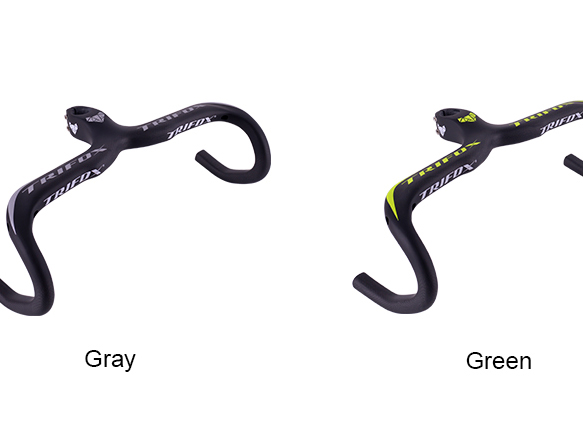
Bike handlebars play a significant role in your cycling experience, affecting your comfort, control, and overall ride quality. Among the various types of handlebars, road bent bars or drop bars are favored by many cyclists for their versatility and aerodynamics. Understanding Road Bent Bars Road bent bars or drop bars are characterized by their curved shape, which offers multiple hand positions. They're commonly found on road bikes and are designed for speed and efficiency. The unique design allows riders to switch between an upright position for relaxed riding and a lower position for improved aerodynamics. Fitting a Road Bent Bar Before you can enjoy the benefits of a road bent bar, you need to ensure it's fitted correctly. Here's a step-by-step guide: 1. Choose the Right Size: Handlebars come in various widths and depths. Choose a size that aligns with your shoulder width for optimal comfort and control. 2. Position the Handlebar: The angle at which the handlebar is positioned can affect your comfort and control. A common starting point is to align the bottom of the drops parallel to the ground, but this can be adjusted to personal preference. 3. Secure the Handlebar: Once positioned, secure the handlebar using the stem clamp. Ensure it's tight enough to hold the handlebar securely but not so tight that it damages the bar. 4. Attach the Controls: Finally, attach the brake levers and shifters. These should be positioned so they can be easily reached from both the hoods and the drops. Adjusting a Road Bent Bar Once your road bent bar is fitted, you may need to make adjustments to optimize comfort: 1. Adjust the Angle: If you find the default angle uncomfortable, try adjusting it slightly. A small change can make a big difference to your comfort. 2. Adjust the Controls: If reaching the brake levers or shifters is uncomfortable, they may need to be repositioned. This should be done gradually, making small adjustments and testing the feel each time. 3. Consider a Professional Fit: If you're struggling to find a comfortable setup, consider getting a professional bike fit. They can assess your riding style and body shape to determine the optimal setup. In conclusion, fitting and adjusting a road bent bar can significantly improve your cycling experience. By ensuring the handlebar is the correct size, positioned correctly, and adjusted for comfort, you can enjoy the benefits of a road bent bar and enhance your rides.
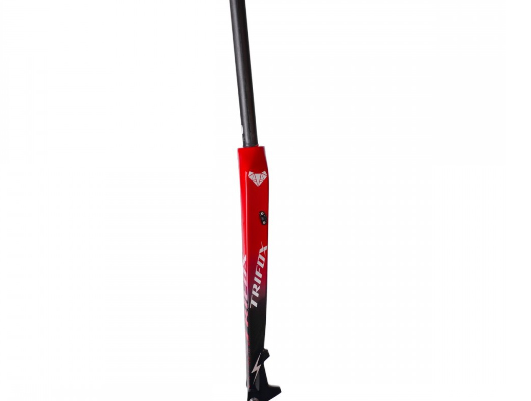
The bike fork plays a pivotal role in your bicycle's performance, absorbing shock from the road and providing control over steering. If you're looking to upgrade your bike with a full carbon fork, or maintain one that's already installed, you've come to the right place. Understanding the Role of a Full Carbon Fork Full carbon forks, as the name suggests, are made entirely out of carbon fiber. They offer several advantages. Carbon fiber is lightweight, reducing the overall weight of your bike. It also has excellent vibration damping properties, providing a smoother ride. Additionally, carbon fiber is stiff, which enhances steering precision. Installing a Full Carbon Fork Installing a full carbon fork can be a technical task. Unless you have experience with bike maintenance, it may be best to have a professional handle the installation. However, if you're comfortable with DIY bike maintenance, here's a general guide: 1. Remove the Old Fork: The first step is to remove the old fork from your bike. This process will involve removing the front wheel, brakes, and possibly the handlebars to access the fork. 2. Prepare the New Fork: Before installing the new fork, you'll need to prepare it. This might involve cutting the steerer tube to the correct length and installing the crown race. 3. Install the New Fork: Once prepared, you can install the new fork. This involves sliding it into the head tube, reinstalling the headset, and adjusting everything so it fits correctly. 4. Reassemble the Bike: With the new fork installed, you can reassemble the rest of the bike. Be sure to adjust and test everything before you ride. Maintaining a Full Carbon Fork Once your new full carbon fork is installed, regular maintenance is key to ensure it continues to perform at its best: 1. Regular Cleaning: Keep your carbon fork clean to prevent buildup of dirt and grime that could degrade the material. 2. Inspect for Damage: Regularly inspect your fork for signs of damage. This can include cracks, chips, or any other signs of wear. If you notice anything concerning, have a professional check it out. 3. Service the Headset: The headset, which holds the fork in place, should be serviced regularly to keep everything running smoothly. 4. Avoid Over-Tightening: When making adjustments, avoid over-tightening bolts as this could damage the carbon. In conclusion, installing and maintaining a full carbon fork on your bike can enhance your cycling experience. Regular maintenance ensures the durability and performance of the fork, providing you with many smooth rides ahead.
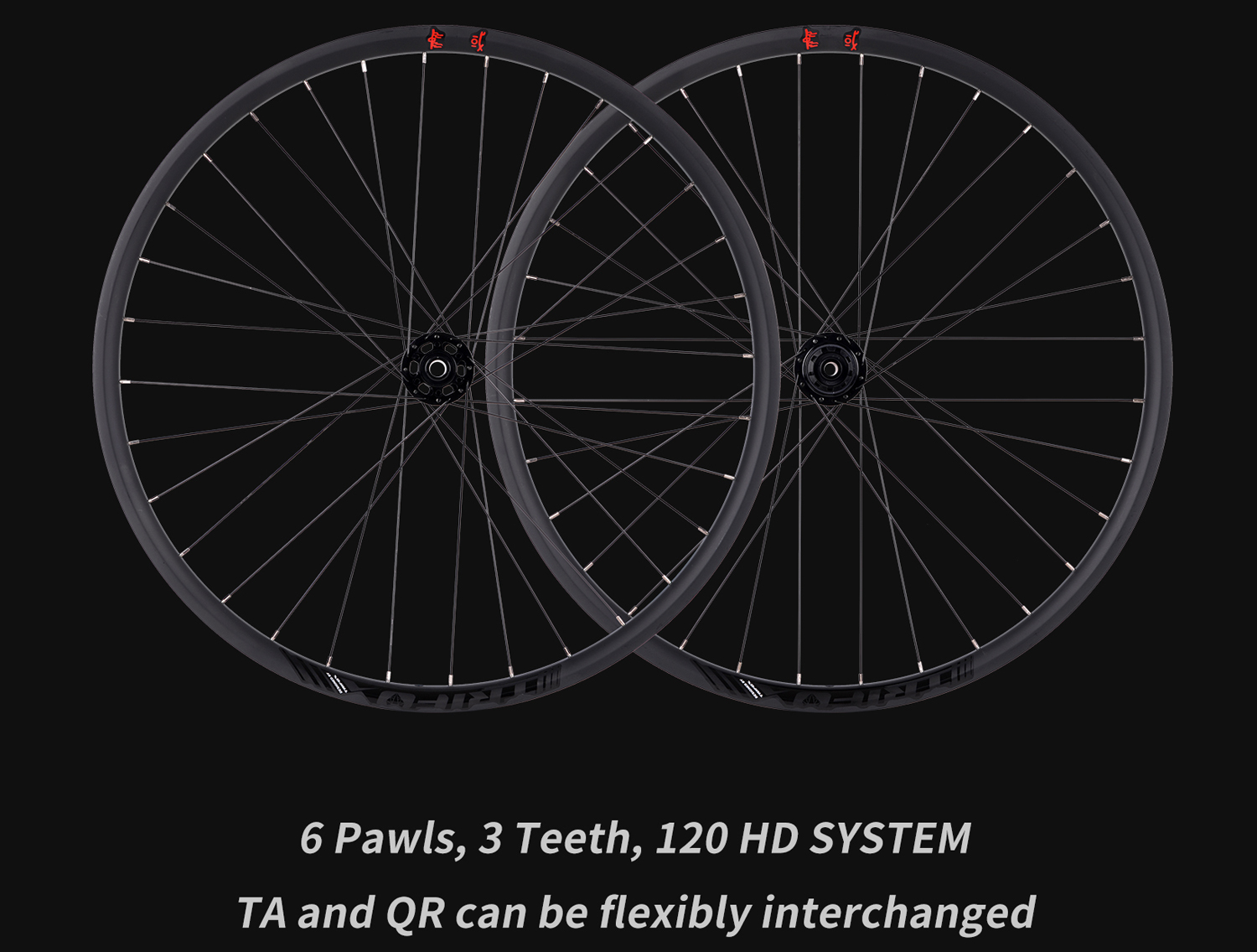
When it comes to enhancing your cycling performance, the type of wheels you choose can make a significant difference. One of the popular options among both professional and amateur cyclists are deep section wheels. This guide will walk you through how to select and use deep section wheels for your bicycle. Understanding Deep Section Wheels Deep section wheels are characterized by their larger rim depth, typically around 40mm or more. The deeper rim provides improved aerodynamics, allowing for faster speeds, particularly on flat surfaces. They're often made from carbon fiber to provide a balance between weight and strength. Choosing the Right Deep Section Wheels The process of choosing deep section wheels depends on several factors: 1. Riding Conditions: If you frequently ride in windy conditions, consider a shallower rim as deeper rims can catch the wind and affect stability. For calm, flat routes, a deeper rim can offer speed benefits. 2. Purpose: Are you racing, or is it for day-to-day use? For racing, especially on flat courses, deep section wheels can provide an edge. However, for everyday use, a shallower rim might be more versatile. 3. Weight: Lighter wheels are generally better, but not at the expense of durability. Carbon fiber deep section wheels like those offered by Trifox Bike provide a good balance. 4. Budget: As with any bike component, there's a wide range of prices. Determine what you're willing to spend before shopping around. Using Deep Section Wheels Once you've chosen your deep section wheels, it's important to use them correctly: 1. Installation: Ensure the wheels are properly installed on your bike. Incorrect installation can lead to performance issues and potential accidents. 2. Maintenance: Regularly check your wheels for signs of wear or damage. This includes checking the brake surface for wear, spokes for tension, and the wheel for true. 3. Riding Technique: Deep section wheels can feel different to ride, especially in windy conditions. Practice riding with them in various conditions to get a feel for how they handle. 4. Tire Pressure: Tire pressure can affect performance. Experiment with different pressures to find what works best for you and your new wheels. In conclusion, deep section wheels can be a fantastic addition to your bicycle, offering potential speed benefits and an aggressive look. However, it's essential to choose the right wheels for your specific needs and use them correctly. With the right approach, you can maximize the benefits of these wheels and enjoy a smoother, faster ride.
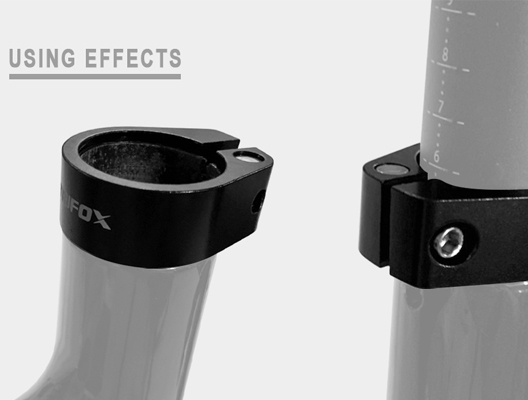
When it comes to maintaining your bicycle, understanding the anatomy of your bike and how to handle it properly is crucial. One of the tasks that can seem daunting but is essential to your bike's performance and longevity is clamping the carbon frame to the top tube. This guide will walk you through the process, ensuring you do it correctly without causing any harm to your bicycle. Understanding the Components Before we dive into the process, it's essential to understand the components we're dealing with. The carbon frame is the main component of your bicycle, providing the structure to which all other parts are attached. The top tube is part of the frame, running from the seat to the handlebars. Clamping these two components together ensures stability and control while riding. Step-by-Step Guide to Clamping Here's a step-by-step guide on how to properly clamp the carbon frame to the top tube: 1. Preparation: Before you begin, ensure you have all the necessary tools. You'll need a torque wrench to ensure proper tightness, and a bicycle stand can be helpful for holding the bike steady. 2. Positioning the Bike: Position the bike in the stand so that the top tube is easily accessible. Make sure the bike is secure and won't move during the process. 3. Applying the Clamp: Place the clamp around the top tube and the part of the frame you want to secure. Ensure it fits snugly but is not overly tight. 4. Securing the Clamp: Using the torque wrench, tighten the clamp according to the manufacturer's specifications. Over-tightening can cause damage to the carbon frame, so be careful not to exceed the recommended torque. 5. Final Check: Once the clamp is secure, give your bike a once-over. Make sure everything is aligned correctly and that the bike feels stable. Things to Consider When clamping a carbon frame to the top tube, there are some things you should keep in mind to prevent damage: Use the Right Tools: Using the right tools is crucial. A torque wrench allows you to tighten the clamp to the exact specification, preventing over-tightening that could damage the frame. Be Gentle: Carbon frames are strong but can be damaged by excessive force. Be gentle when applying the clamp and tightening it. Regular Maintenance: Regularly check and adjust the clamp as necessary. Over time, it can loosen, which could affect the bike's performance. In conclusion, clamping the carbon frame to the top tube is a task that requires attention to detail and careful handling. However, with the right tools and approach, you can do it successfully, ensuring your bike remains in prime condition for all your cycling adventures.
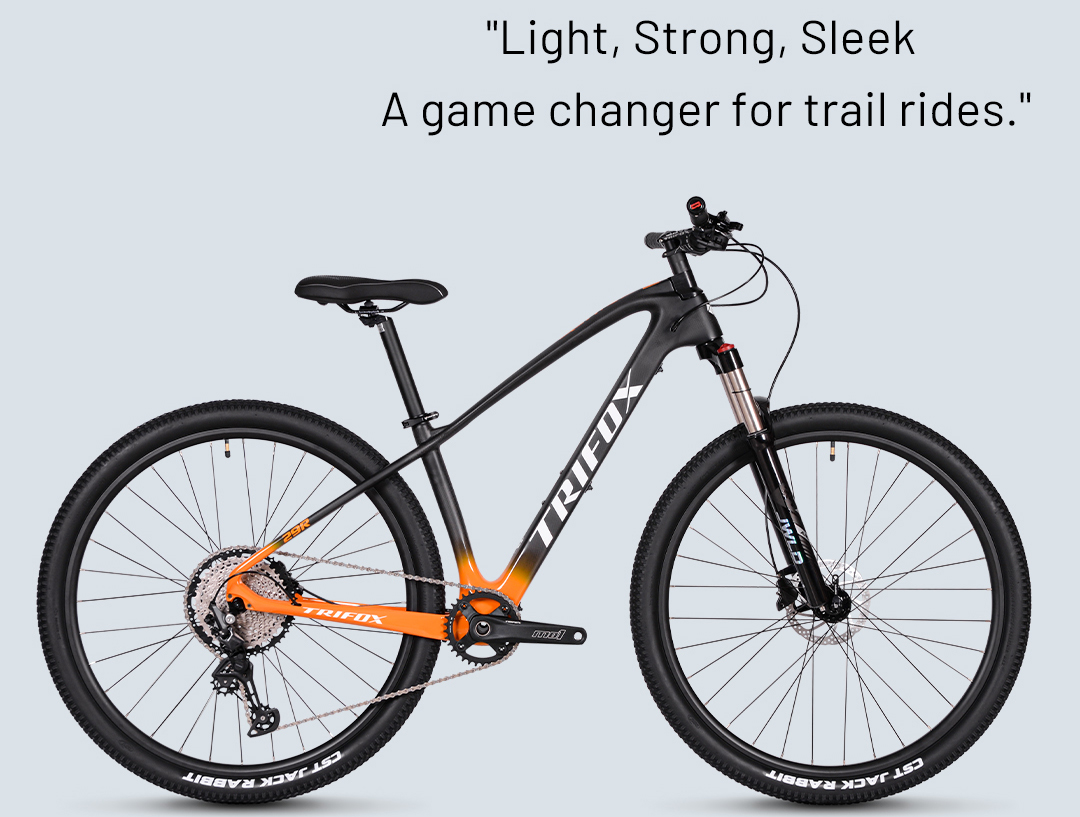
Bicycles, one of the most versatile means of transport, come in various shapes and sizes. Each type designed with a specific purpose in mind, whether it's for commuting, racing, or off-road adventures. Understanding and classifying these bicycles can help you make an informed decision when purchasing a bike that suits your needs. Here's a guide to help you understand and classify different types of bicycles. Road Bikes As the name implies, road bikes are designed for riding on paved roads. They are usually lightweight with narrow tires and drop handlebars to allow for speed and efficiency. Within this category, there are subcategories like racing bikes, endurance bikes, and touring bikes. Racing bikes are built for speed with a focus on lightweight construction and aerodynamics. Endurance bikes prioritize comfort over long distances, while touring bikes are designed for carrying loads over long distances. Mountain Bikes Mountain bikes are built for off-road trails. They are characterized by wide, knobby tires for traction, and they have a suspension system to absorb shocks from rough terrains. There are various types of mountain bikes, including cross-country, trail, enduro, and downhill bikes, each designed for specific types of off-road riding. Hybrid Bikes Hybrid bikes combine the characteristics of both road and mountain bikes. They are versatile bikes that you can use for commuting, light trail riding, or casual cycling. They typically have flat handlebars for comfortable upright riding position and wider tires than road bikes for better stability and comfort. Folding Bikes Folding bikes, as the name suggests, can be folded for easy storage and transport. They are great for city dwellers who have limited storage space or for those who need to take their bike on public transportation. Women's Bikes Women's bikes are designed with the average woman's anatomy in mind. They usually have shorter top tubes and taller head tubes, which can provide a more comfortable riding position for many women. The size of the bike is also important, and for a woman who is 1.65m tall, a small to medium-sized bike would typically be suitable. Bike Brands There are numerous bike manufacturers out there, each with their own strengths. For instance, Trifox is a reputable brand known for their high-quality bikes. Whether you're looking for a road bike, mountain bike, or something else, Trifox has a range of options to choose from. You can explore their offerings on official store. In conclusion, understanding and classifying bicycles can significantly enhance your cycling experience, whether you're a seasoned professional or a beginner. By determining what you want to get out of your bike, you can find the type that best suits your needs and preferences.
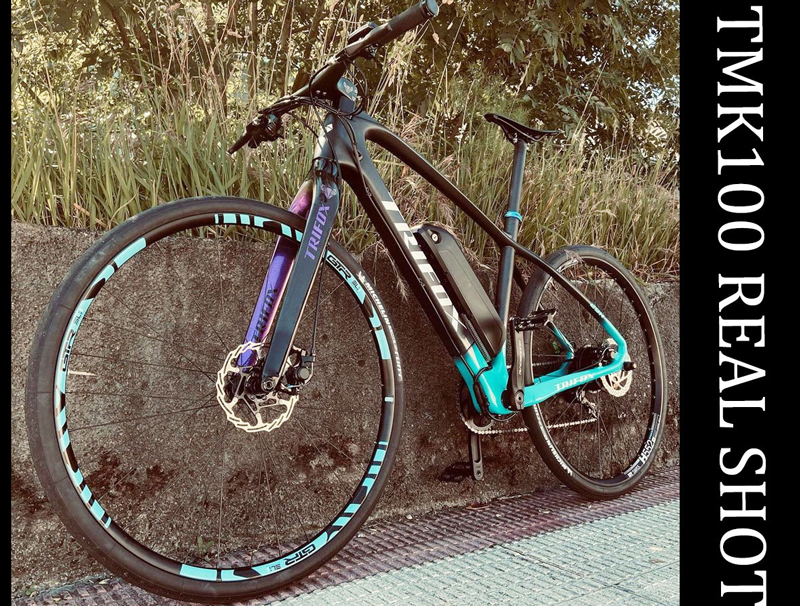
The fork is one of the most critical components of a road bike, affecting everything from handling to comfort. A rigid carbon fork can significantly enhance your ride by improving maneuverability and reducing weight. Understanding Rigid Carbon Road Bike Forks A rigid carbon road bike fork provides several advantages over its steel or aluminum counterparts. Being lightweight and stiff yet shock-absorbent, it offers a smoother ride and better control. Trifox offers a variety of high-quality, performance-oriented rigid forks that cater to different riding needs. Step 1: Choosing the Right Fork When selecting a rigid carbon fork, consider the following factors: - Steerer Tube Diameter: Ensure the fork's steerer tube diameter matches your bike's headset. - Axle-to-Crown Length: This affects the bike's handling. A longer length raises the front end, resulting in more relaxed steering, while a shorter length lowers it, making steering quicker. - Rake or Offset: This is the distance between the steering axis and the wheel's center. More rake results in slower steering but more stability, while less rake makes steering faster but less stable. Step 2: Removing the Old Fork Before removing the old fork, make sure your bike is securely mounted on a bike stand. Loosen and remove the bolts securing the stem to the steerer tube, then carefully slide the stem off the tube. Remove the spacers, bearings, and finally, the fork itself. Step 3: Installing the New Fork Slide the new fork into the head tube, ensuring the bearings and spacers are correctly positioned. Then, slide the stem onto the steerer tube and loosely tighten the bolts. Make sure the stem and front wheel are aligned before fully tightening the bolts. Step 4: Cutting the Steerer Tube If necessary, you may need to cut the steerer tube to the correct length. Mark the desired length, then use a hacksaw to make the cut. Ensure the cut is straight and smooth to avoid damaging the headset. Step 5: Securing the Fork Once the steerer tube is the right length, reassemble the headset and secure the stem. Install the top cap and adjust the preload on the bearings before finally tightening the stem bolts. Conclusion Choosing and installing a rigid carbon road bike fork might seem daunting, but with careful consideration and the right tools, it's a task you can accomplish. A well-chosen and correctly installed fork can significantly improve your riding experience. Remember, safety is paramount; if you're unsure about any steps, consider seeking professional help.
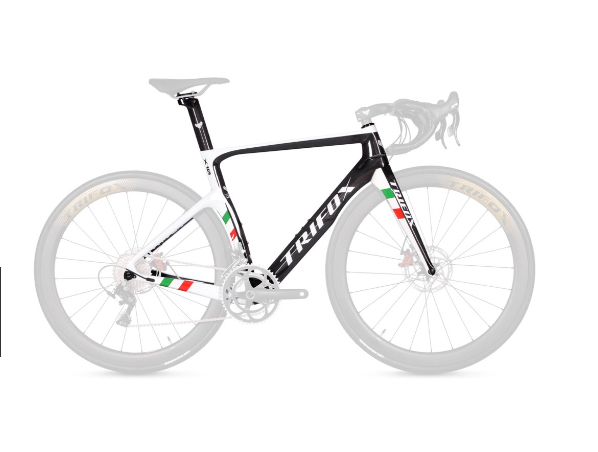
A road bike's performance, comfort, and handling are largely influenced by its frame. Therefore, choosing the right road bike frame is crucial for a satisfying and enjoyable ride. Understanding Road Bike Frames Road bike frames are the backbone of your bicycle. They not only support the rider's weight but also provide the structural integrity needed for the bike's components. Carbon fiber is a popular material for road bike frames due to its lightweight and high strength. It absorbs road vibrations, providing a smoother ride compared to aluminum or steel frames. A great example of a carbon road bike frame is offered by Trifox, known for its high-quality and performance-oriented bike frames. Step 1: Evaluate the Material The first step in comparing road bike frames is to look at the material. Carbon fiber frames are light, stiff, and absorb vibrations well, making them an excellent choice for serious road cyclists. Step 2: Check the Geometry The geometry of a bike frame affects how the bike handles and fits the rider. Racing frames usually have steep angles for quick handling, while endurance frames have more relaxed angles for comfort on long rides. Make sure to choose a frame that suits your riding style. Step 3: Consider the Size Size is another crucial factor. A frame that's too large or small can make riding uncomfortable and inefficient. Most manufacturers provide size charts based on rider height, but it's also important to consider other factors like inseam length and arm length. Step 4: Look at the Design Design features like aerodynamic shaping and integrated cable routing can also make a difference in performance. Some frames are designed with thin, flat sections to flex and absorb road shock for a smoother ride. Step 5: Compare the Price Finally, consider your budget. While carbon frames are generally more expensive than aluminum or steel, they offer superior performance and comfort. It's worth investing in a high-quality frame that will last you many years of riding. Conclusion Choosing the right road bike frame involves careful comparison and consideration of various factors. Remember, the perfect frame is one that suits your riding style, fits you well, and falls within your budget. By taking the time to compare different frames, you can find the perfect one for your needs and enjoy many happy miles on the road. So you can refer to the Trifox Carbon fiber road bike.
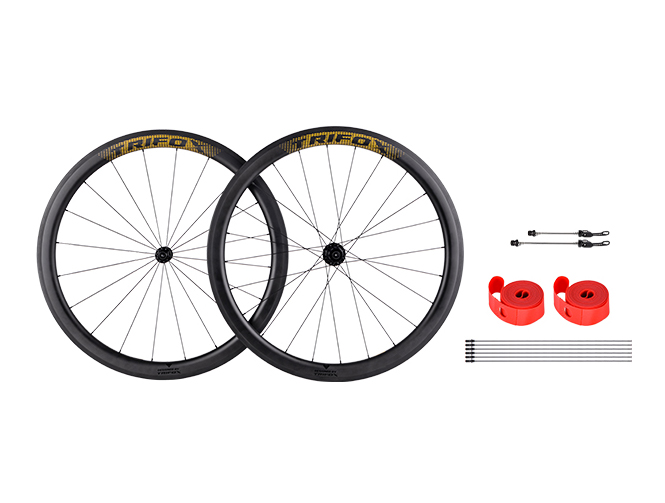
Cycling is a passion for many, and part of the thrill comes from customizing and upgrading your bicycle. One such upgrade that can significantly improve your cycling experience is installing quick release carbon wheels. These wheels are not only lightweight and durable but also allow for easy installation and removal. Understanding Quick Release Carbon Wheels Quick release carbon wheels are a popular choice among cyclists due to their excellent balance of weight, strength, and aerodynamics. They come with a quick-release mechanism that makes it easy to install and remove the wheels without any tools. Trifox offers a range of high-quality quick release carbon wheels, including the Rim Brake Clincher Carbon Wheelset WT17 and the V-Brake Clincher Carbon Wheelset WT18. Step 1: Prepare Your Bicycle Start by preparing your bike. Position it so it's stable and won't tip over during the wheel installation process. If you have a bike stand, this would be the best time to use it. Step 2: Remove the Old Wheels To remove the old wheels, open the quick release lever on the wheel hub and unscrew the end nut if necessary. Once loosened, the wheel should slide out easily from the dropouts (slots in the frame and fork where the wheel axles go). Step 3: Insert the New Wheel Take your new quick release carbon wheel and slide the axle into the dropouts. Make sure the wheel is centered in the frame or fork. Step 4: Secure the Quick Release Once the wheel is in place, close the quick release lever to secure the wheel. The lever should be firm but not overly tight. If necessary, adjust the tension using the nut on the opposite side of the lever. Step 5: Check the Installation After installing the wheel, give it a spin to make sure it's turning freely. Also, check that it's securely held by the quick release and isn't wobbly or misaligned. Conclusion Installing quick release carbon wheels on your bicycle is a straightforward task that can greatly enhance your riding experience. It not only improves your bike's performance but also makes wheel removal for transportation or tire changes a breeze. As always, ensure you're familiar with your bike's specifications and the product details before starting the installation.

Bike computers are an essential tool for cyclists. They provide valuable data such as speed, distance traveled, and heart rate, which can enhance your cycling experience and help you achieve your fitness goals. However, to make the most of your bike computer, it must be properly mounted. In this blog post, we will guide you on how to correctly mount your bike computer on a stem mount. The Stem stem bike computer mount A stem mount is a device that attaches to the stem of your bicycle, providing a secure and convenient location for your bike computer. It allows you to keep your eyes on the road while easily viewing your ride data. One of the best options in the market is offered by Trifox, known for its durable and easy-to-install bike computer mounts. Step 1: Selecting the Right Mount The first step is to choose a stem mount compatible with your bike computer. Check the specifications of both your bike computer and the stem mount to ensure they match. Step 2: Positioning the Mount Once you have the right mount, decide where on the stem you want to position it. The ideal spot is usually in the middle of the stem, where it's easy to see the computer screen without straining your eyes or neck. Step 3: Securing the Mount Next, position the mount onto the stem and secure it in place. Some mounts come with rubber inserts to fit different stem sizes; ensure you use the right one for a snug fit. Tighten the mount until it is firmly secured to the stem. Be careful not to over-tighten it to avoid damaging the stem or the mount. Step 4: Attaching the Bike Computer Once the mount is securely attached to the stem, it's time to attach your bike computer. This usually involves sliding the computer into the mount until it clicks into place. Ensure the computer is secure and does not wobble or slide out of the mount. Step 5: Adjusting the Viewing Angle Finally, adjust the viewing angle of the bike computer. The goal is to position the screen so that you can easily see it while riding. This might require some trial and error to find the perfect angle. Conclusion Mounting your bike computer on a stem mount enhances your cycling experience by providing easy access to valuable ride data. By following these steps, you can ensure your bike computer is securely installed and conveniently positioned for optimal use. Remember, proper installation is crucial for the longevity of your equipment and for a seamless cycling experience.

















